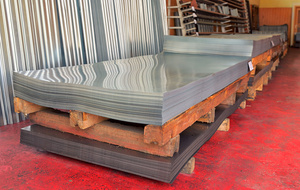Roofing Installation Guide: GI Sheets in the Philippines
Body
Galvanized Iron (GI) sheets have been a staple in the Philippine construction industry for decades, especially for roofing. Their longevity, affordability, and ease of installation make them a popular choice for residential and commercial construction. In a typhoon and heavy-rain-prone country, the resilience of GI sheets in the Philippines to extreme weather conditions is priceless. This article will help you through the installation process of GI sheets for roofing to keep your building safe and secure.
Importance of GI Sheets
GI sheets are manufactured by applying a zinc coating on steel, offering great corrosion protection. This characteristic is important in the Philippines due to high humidity and regular rainfalls, which tend to disintegrate weaker materials rapidly. GI sheets are also light, thus lowering the overall structural load, and affordable in terms of material and installation prices. These sheets come in different profiles and colors for customization.
Recent Standards and Regulations
More stringent requirements for GI sheets for roofing have been adopted by the Department of Trade and Industry (DTI) in the last few years. Department Administrative Order (DAO) 20-10, promulgated in December 2020, requires hot-dip metallic-coated and pre-painted galvanized coils and sheets to comply with quality standards before they can be sold in the market. These requirements include a minimum thickness of 0.4 mm of the coated steel so that consumers can enjoy high-quality materials that can resist weather conditions.
Preparing for Installation
Understanding Local Regulations and Standards
The DTI's DAO 20-10 sets minimum product standards for galvanized steel coils and sheets. This regulation ensures that all GI sheets used for roofing meet quality and safety standards, providing consumers with reliable products. When purchasing GI sheets, look for the Philippine Standard (PS) Quality Certification License to ensure compliance with these standards.
Choosing the Right Materials
GI Sheets
Calculate the required number of GI sheets for your roofing project, factoring in overlaps and necessary cuts. It's recommended to have a surplus of sheets to accommodate these.
Wooden Purlins
These structural components serve as the support for these sheets.
Zinc Screws with Rubber Washers
Secure these sheets properly to create a watertight seal.
Roof Sealant
Seal overlaps and screw points with sealant.
Ridge Capping
To seal the roof’s peak.
Essential Tools and Equipment
Circular Saw
For cutting GI sheets to size.
Drill
For drilling screw holes.
Safety Gear
Helmets, gloves, and safety harnesses for working at heights.
Measuring Tape
For accurate measurements.
Installation Techniques
Preparing the Roof Structure
Structural Assessment
Before starting the installation, confirm that your roof structure is strong enough to hold these sheets, despite their light weight.
Remove Old Roofing
Before installing new these roofing sheets, remove the old material and inspect the underlying structure for damage requiring repair.
Install Purlins
Secure leveled wooden purlins to the roof framework with 1 to 2 meter spacing, adjusting for design and load.
Installing GI Sheets
Measure and Cut
Measure the roof length with desired overhang. Use a circular saw to cut them to the required size.
Start at the Bottom
Start the installation of these roofing sheets at the roof's lower edge, ensuring a slight overhang at the eaves.
Overlap and Screw
Overlap GI roofing sheets by a few inches and secure them to purlins with zinc screws and rubber washers. Ensure that you do not over-tighten the screws, as this can damage the sheets.
Sealant Application
Apply roof sealant at overlaps and screw points for a watertight seal.
Work Upward
Proceed with the installation of these sheets by arranging them in successive rows, moving upwards. Ensure a slight overlap between each row.
Ridge Capping
Finish the roof with ridge capping at the peak for sealing and extra protection.
Additional Roofing Accessories
Gutters and Downspouts
To prevent water damage to the foundation, install these.
Flashing
Apply flashing to the edges of the roof and around chimneys or vents to prevent water seepage.
Valley Gutters
If your roof has valleys, install valley gutters to manage water flow effectively.
Safety and Maintenance Considerations
Use Safety Gear
Always wear helmets, gloves, and safety harnesses when working at heights.
Stable Surface
For safety, make sure the working area is firm and steady.
Cautious on Slopes
Be cautious when working on sloped roofs to prevent falls.
Post-Installation Maintenance
Regular Inspections
Check screws and sealant routinely.
Prompt Repairs
Replace any damaged sheets promptly to prevent water leakage.
Cleaning
Clean the roof regularly to remove debris and maintain its appearance.
Key Takeaway
Installing GI sheets in the Philippines for roofing is a manageable task when done correctly. By following the steps outlined above and adhering to local regulations, you can ensure a durable and weather-resistant roof that protects your structure from the elements. The cost-effectiveness and minimal maintenance requirements of GI sheets make them an excellent choice for both DIY enthusiasts and professional contractors. As the Philippine construction industry continues to evolve, GI sheets remain a reliable option for building safe and resilient homes and buildings.











Comments